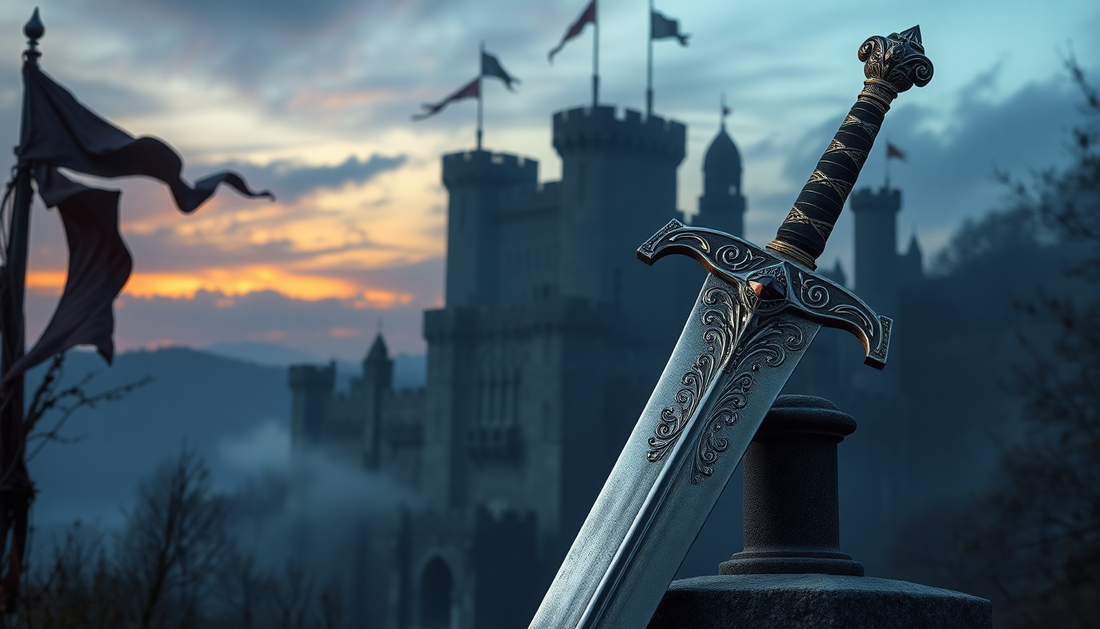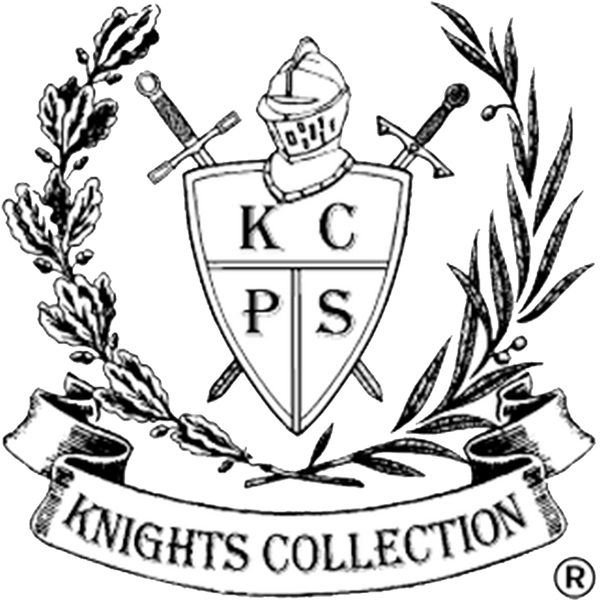
Viking Swords: History, Buying Guide, and Care | Knight's Collection
Share
Viking Swords: A Complete Guide for Collectors and Reenactors
Viking swords still catch the imagination. They mix beauty, history, and real fighting use. Collectors, reenactors, and history fans all prize these blades. This guide explains history, construction, buying tips, and care. You will also find how to shop Viking swords for sale and examples from Knight's Collection.
History and Origins of Viking Swords
Early development and timeline
Viking swords developed from Migration Period blades. By the Viking Age they had distinct forms. Archaeologists found blades in graves and hoards across Scandinavia and the British Isles. Famous finds, like the Ulfberht examples, show early high-quality steel. These discoveries help date sword styles and tech changes.
Role in Viking society and warfare
Swords were more than tools. They marked rank and family pride. Many were named and passed through generations. On the battlefield, a sword balanced cutting and thrusting, used alongside shields and axes. The prestige of swords helped shape later Medieval Swords designs across Europe.
Regional styles and famous types
Scandinavian blades mix local craft with continental influence. You see short swords and single-handed pattern-welded blades. Variations reflect trade and raids. Typical Viking swords lean toward broad blades with a clear fuller and a short, sturdy guard.
Anatomy and Types of Viking Swords
Blade shapes and lengths
Most Viking swords measure about 70 to 90 centimeters. Blades taper for both cut and thrust. A central fuller lightens the blade without losing strength. Some examples favor cutting edges. Others aim for a balanced cut-and-thrust profile.
Hilt, pommel, and guard designs
Pommels vary widely and date the sword. “Brazil nut” and lobed pommels are common. Guards are generally short and straight. Hilt shapes help identify origin and age. The grip often uses organic materials like wood or leather.
Classification of Viking swords vs Medieval Swords
Viking swords are ancestors of many medieval types. Later Medieval Swords often lengthened and adapted for armored combat. Still, form and technique show clear continuity. Collectors appreciate Viking swords for their role in this evolution.
Materials and Forging Techniques
Iron, steel, and pattern welding
Pattern-welded blades mix softer and harder steels. The technique gave both strength and a visible pattern. Many authentic Viking blades used pattern welding. The look is attractive and historically accurate.
Hand-forged Viking swords: process and markers
True hand-forged Viking swords show subtle hammer marks and join lines. Makers fold and weld steel, then shape, heat treat, and polish. You can spot a hand-forged sword by the quality of the grind, the tang fit, and small irregularities. These blades often perform better in cutting tests.
Modern forging methods and quality differences
Today you can find mass-made and custom hand-forged items. Mass production uses machine forging and basic steels. Custom hand-forged Viking swords take more time and skill. They usually cost more but offer better balance and long-term durability.
Authenticity, Replicas, and Decorative Swords
Archaeological originals vs replicas
Original swords belong in museums or trusted collections. Replicas reproduce looks but often use modern steels and fits. A replica can be faithful in shape while differing in metallurgy. Knowing the difference matters for value and use.
Viking sword replicas: choosing between display and function
Decide if you want a show piece or a working blade. Decorative Viking sword replicas often have softer steels and painted finishes. Functional replicas use carbon steel, full tangs, and proper heat treatment. If you plan cutting drills or reenactment, pick a battle-ready model.
Legal and ethical considerations when buying replicas
Be mindful of export laws and cultural heritage rules. Some artifacts are legally protected. Reputable sellers disclose origin and reproduction methods. Accurate labeling shows respect for history and law.
How to Choose Viking Swords: Buying Guide
Decide your purpose: display, reenactment, or cutting
Match the sword to your goal. Display pieces can focus on decoration and detail. Reenactors need historically accurate shape and durable construction. Cutting practice demands tough heat treatment and a proper edge.
Spotting quality: what to look for
Look for solid tangs, clean joins, and consistent grind lines. Materials matter: high-carbon steel and pattern welding are good signs. Check maker reputation and reviews. Hand-forged Viking swords will list the smith and process.
Where to buy Viking swords for sale
Buy from trusted specialists or well-rated marketplaces. Knight's Collection offers battle-ready hand-forged Viking swords and fine replicas. Look for clear warranties, return policies, and customer support. Prices vary from budget replicas to premium custom blades.
Care, Maintenance, and Safety
Cleaning and rust prevention
Carbon steel needs regular oiling. Use light gun oil or sword oil. Wipe blades after handling. Keep humidity low and avoid leather scabbards for long-term storage.
Storage, display, and mounting tips
Display swords horizontally or at a slight angle. Avoid direct sunlight and damp walls. Use padded mounts to protect grips and blades. For valuable blades, keep documentation with the sword.
Safe handling and training practices
Always use protective gear for cutting practice. Start with slow drills and a qualified instructor. Check scabbard fit and secure mountings to prevent accidents. Know local laws for blade possession and use.
Using Viking Swords Today: Collecting, Reenactment, and Martial Arts
Building a collection of Viking swords
Record provenance, purchase details, and maker notes. Group swords by type or era. Rotate displays to avoid stress on handles and guards. Proper documentation raises resale value.
Reenactment and live demonstrations
Choose historically accurate pieces and sturdy fittings. Expect extra maintenance from active use. Test edge geometry and balance before public demonstrations.
Training, cutting practice, and preservation
Use blades designed for cutting to protect the edge. Preserve historic replicas by avoiding hard targets. Regularly inspect and re-oil after training.
Conclusion
Viking swords blend history, craft, and practical use. They influenced many Medieval Swords forms. Whether you seek hand-forged Viking swords or faithful Viking sword replicas, know your purpose. Look for quality, clear maker info, and proper care. Explore Viking swords for sale at Knight's Collection to find both display pieces and battle-ready blades. Shop Knight's Collection to buy authentic craftsmanship that fits your collection or reenactment needs.
